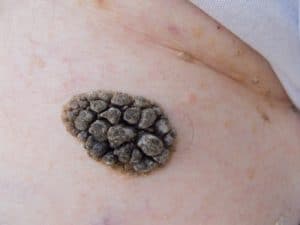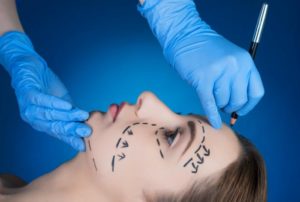How to Spot Skin Cancer Early: A Comprehensive Guide by Dr Ali Soueid
Skin cancer is one of the most common cancers worldwide, yet many cases go undetected until they become more serious. Early detection is crucial. As a consultant plastic surgeon with over 25 years of experience in skin cancer care, Dr Ali Soueid emphasises the importance of knowing the warning signs and seeking medical attention promptly. This guide outlines how to spot potentially dangerous moles, the different types of skin cancer—including melanoma—and when to seek professional advice.
What Is a Mole and When Should You Be Concerned?
Moles (also called naevi) are common skin growths made up of melanocytes—the cells that give skin its pigment. Most people have between 10–40 moles, and they are usually harmless. However, a mole that changes in size, shape, or colour may be a sign of melanoma, the most serious type of skin cancer.
Types of Moles
- Congenital Moles – Present at birth; slightly higher risk for melanoma.
- Acquired Moles – Appear during childhood or adulthood; most are benign.
- Atypical/Dysplastic Moles – Irregular shape and varied colours; may resemble melanoma and require monitoring.
The ABCDEs of Melanoma Detection
One of the most trusted tools for identifying suspicious moles is the ABCDE checklist:
| Feature | What to Look For |
|---|---|
| A – Asymmetry | One half of the mole does not match the other. |
| B – Border | Edges are irregular, ragged, or blurred. |
| C – Colour | Varies across the mole: shades of brown, black, red, white, or blue. |
| D – Diameter | Larger than 6 mm (about the size of a pencil eraser). |
| E – Evolving | Any change in size, shape, colour, or symptoms such as bleeding or itching. |
What Is Melanoma?
Melanoma is a type of skin cancer that starts in the melanocytes. It is less common than basal cell or squamous cell carcinoma but far more dangerous if not caught early. Melanoma can develop in an existing mole or appear as a new pigmented lesion.
Types of Melanoma:
- Superficial Spreading Melanoma – The most common type; often appears as a flat, irregular lesion.
- Nodular Melanoma – More aggressive; appears as a raised bump that may ulcerate or bleed.
- Lentigo Maligna Melanoma – Common in older adults; typically on sun-damaged areas like the face.
- Acral Lentiginous Melanoma – Appears on palms, soles, or under nails; more common in people with darker skin.
- Amelanotic Melanoma – Lacks pigment, making it harder to detect; may appear pink or skin-coloured.
Other Types of Skin Cancer
- Basal Cell Carcinoma (BCC): Most common, slow-growing, appears as a pearly or waxy bump.
- Squamous Cell Carcinoma (SCC): May appear as a firm red nodule or flat lesion with a scaly crust.
These are less aggressive than melanoma but still require treatment.
When to See a Specialist
Consult a skin cancer specialist if you notice:
- A mole or lesion that fits any of the ABCDE criteria
- A sore that doesn’t heal
- New growths or changes in existing lesions
- Persistent itching, bleeding, or crusting on a mole
Why Choose Dr Ali Soueid?
Dr Ali Soueid brings over 25 years of surgical expertise in treating skin cancers across the UK and the Gulf. His approach combines:
- Early detection with high-resolution dermoscopy and clinical examination
- Oncological precision to remove cancer fully with minimal cosmetic impact
- Reconstructive excellence to restore form and function after excision
- Experience treating high-risk and complex skin cancers
With clinics in London, Qatar, Dubai, and Beirut, patients benefit from expert care tailored to their individual risk factors and cosmetic concerns.
Patient-Centred Skin Cancer Care
Dr Soueid ensures:
- Fast-track referrals and same-day consultations for suspicious lesions
- Histological analysis and biopsy when necessary
- Cosmetic reconstruction using skin flaps or grafts if needed
Useful Resources
- NHS – Skin Cancer Symptoms
- British Association of Dermatologists – Patient Information
- American Academy of Dermatology – Spot Skin Cancer
- Medscape – Melanoma Overview
Final Thoughts
Skin cancer is often curable when detected early. Regular skin checks and awareness of the ABCDE signs can save lives. If you’re concerned about a mole or lesion, seek a consultation with an experienced plastic surgeon or dermatologist.
To book a professional skin cancer consultation with Dr Ali Soueid, visit www.cosmesticaestheticplasticsurgery.com.





